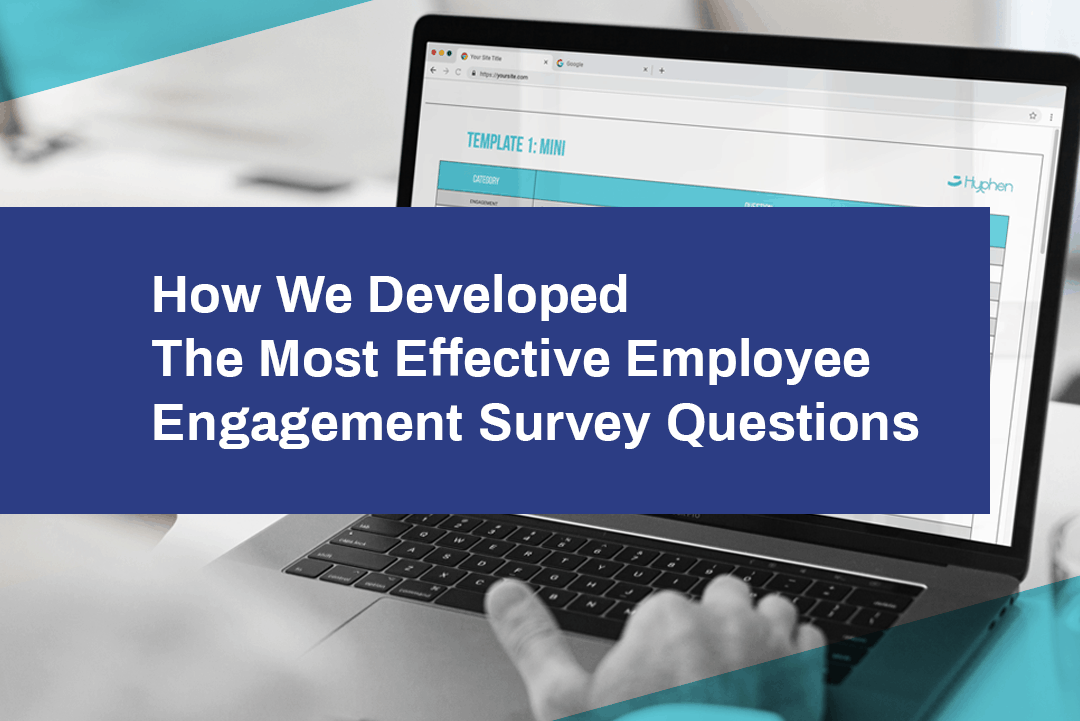Effective employee feedback software is only part of a comprehensive employee engagement strategy. Survey questions are another critical component that requires an informed, well-researched approach to draw the most in-depth insights from employee feedback.
We’ve previously written about survey questions in conjunction with our Employee Engagement Framework & Templates. However, given the importance of the topic, a closer look at our question development process can provide organizations with a better understanding of what’s involved. A look at our approach, including the following elements, will help HR departments design survey questions that will draw the most insights from their people data:
- The Simply Irresistible Organization™ model
- Academic research
- Mutually exclusive, collectively exhaustive (MECE) questions & answers
- Survey question formats
As you’ll see, our development strategy is exhaustive and rooted in sound academic research. This approach helps ensure the feedback is authentic, reliable, and relevant to the topics an organization wants to explore.
Bersin’s Simply Irresistible Organization Model
Josh Bersin is the founder of Bersin by Deloitte and a pioneer in employee engagement research. His Simply Irresistible Organization model is a ground-breaking framework built around five separate core drivers of employee success:
- Meaningful work
- Supportive management
- Fantastic environment
- Growth opportunity
- Trust in leadership
We use Bersin’s framework as the foundation for our survey question development process, primarily because of its flexibility and eye towards the modern workforce. Many organizational models still use traditional, almost archaic frameworks that assume workers intend on staying with an employer for as long as possible.
That perspective might have been relevant until just two or three decades ago, but times have changed. Employers must now keep their workers content, engaged, and satisfied with their roles as well as the work environment and culture. Failure to do so results in falling productivity, lower engagement, and increased attrition. Workers are now quicker to leave an organization to search for one that meets their expectations, where 40% of turnover now stems from people hired within the past 12 months.
40% of turnover now stems from people hired within the past 12 months.
Bersin’s Simply Irresistible Organization model incorporates the different areas that an employer must actively cultivate to keep today’s workforce engaged and productive. We took the model’s five core success drivers and identified a handful of underlying concepts within each. This approach allowed us to develop 13 different question categories and relevant survey questions for all of the drivers. We specifically chose those different areas to provide a full spectrum of insights, ultimately providing the chassis that we built the rest of our question development process around.
Academic Research
We then took our 13 categories and initial questions to Professor Gavin Kilduff of NYU’s Stern School of Business, a leading authority on management and organizational theory. Professor Kilduff provided us with the most current and comprehensive research to ensure our templates were timely and relevant to today’s organizational structures and cultures. His expertise in the field was instrumental in identifying gaps in our work, also pointing out any areas that we should emphasize or change.
Our many engagements with Professor Kilduff allowed us to develop a broader perspective with our survey questions. Ultimately, the results encompassed the entire range of factors that employers must examine to positively affect engagement. With his feedback and additional research, we were able to refine the wording and scope of each question until they met strict academic research standards, addressing all the different facets of employee engagement.
Mutually Exclusive, Collectively Exhaustive
Bersin’s Simply Irresistible Organization model, as well as our own research and work with Professor Kilduff, highlighted the importance of making our group of survey questions as comprehensive as possible. Mutually Exclusive, Collectively Exhaustive (MECE) is a concept championed by McKinsey and embraced by most leading consulting firms, essentially a grouping mechanism for structuring and defining complex problems to be solved. In survey questions, the concept allows an employer to avoid repetitive, overlapping questions and answers while optimizing depth and detail.
The MECE principle is also beneficial in a broader sense by ensuring we exhaustively cover the many different components of employee engagement without retreading particular topics. For instance, separate questions on a benefits package could target PTO, health insurance, retirement plans, dental coverage, and other elements. However, if an employee doesn’t like their health insurance, but the survey includes it in multiple questions, that repetition could skew the results and limit insights while also lengthening the survey. The MECE principle makes sure we’re not redundant and asking the same thing in different ways, but still receiving a full assessment of employee engagement.
Question Formats
The different question formats are another important factor we take into account. While open-ended questions allow employers to use data analytics, natural language processing (NLP), and machine learning to extract deeper insights — assuming the feedback software includes the technology — it’s possible to have too much of a good thing.
The vast majority of our engagement survey framework uses the Likert scale, a five- to seven-point scale that allows the user to rank their response with simple and familiar phrases, often “strongly agree, mostly agree, neither agree nor disagree” or something similar. The Likert scale lets employers extract the most actionable data from the survey results without the ambiguity of other question formats.
Including a comments section with Likert scale questions gives employees the opportunity to expand on their responses, allowing employers to use tools like sentiment analysis to extract even deeper insights. We also use a small number of open-ended questions in conjunction with Likert scale-based questions for topics that require more in-depth insights. The combination of the two maximizes actionable people data and analysis while still capturing nuance that explains why employees feel a certain way about a topic.
We founded our approach to survey question development in academic research and expertise, from Bersin’s Simply Irresistible Organization model and our work with Professor Gavin Kilduff to our own independent insights. The resulting Employee Engagement Framework & Templates gives HR managers a convenient but effective set of survey questions to optimize employee engagement in their organization. However, if you choose to develop your own survey questions, concepts like MECE and the Likert scale rather than assumptions and intuition will maximize the actionable insights you receive.







